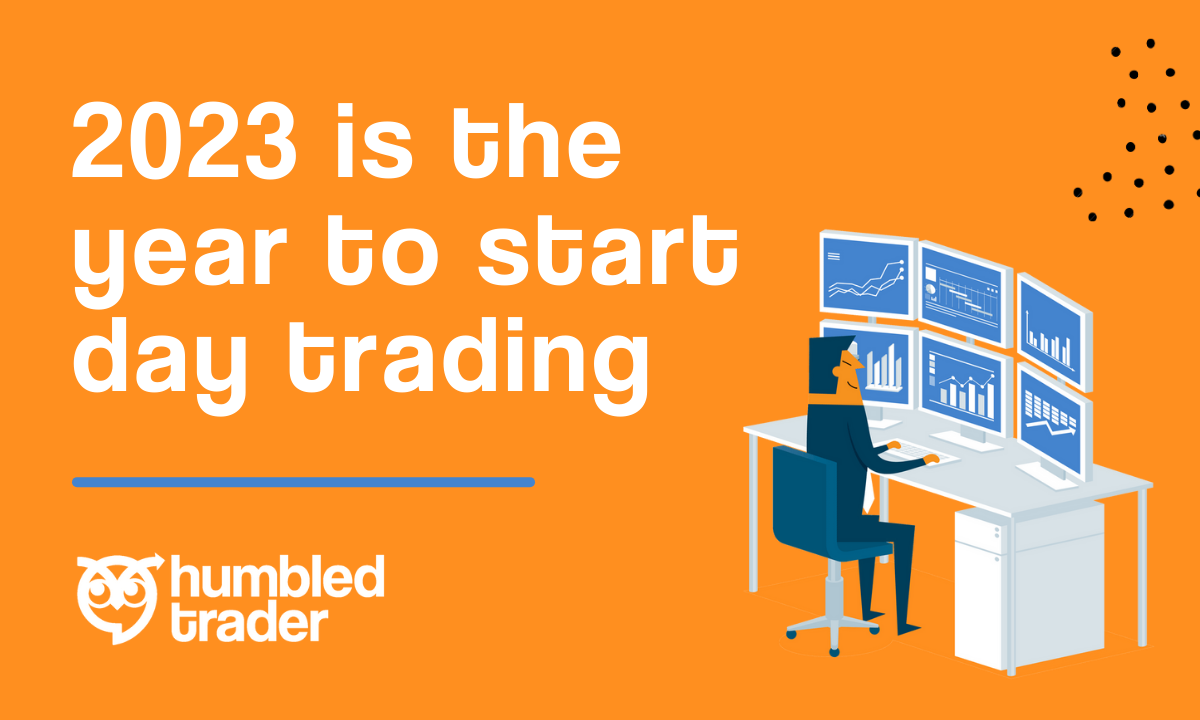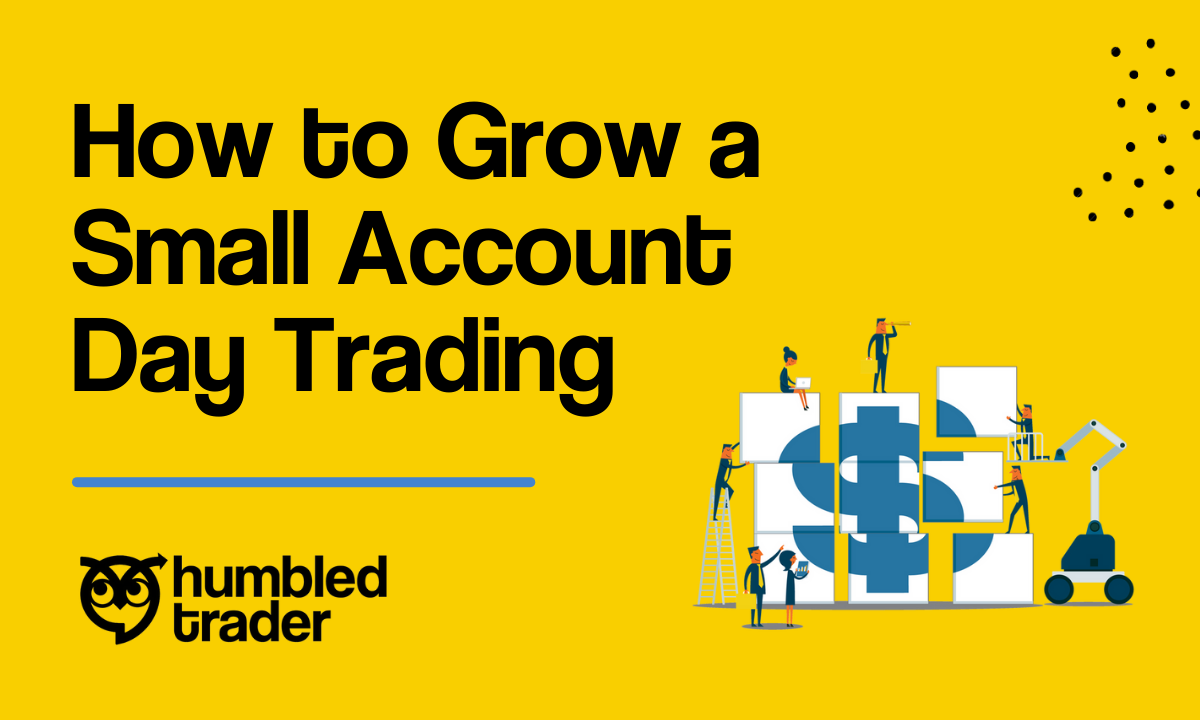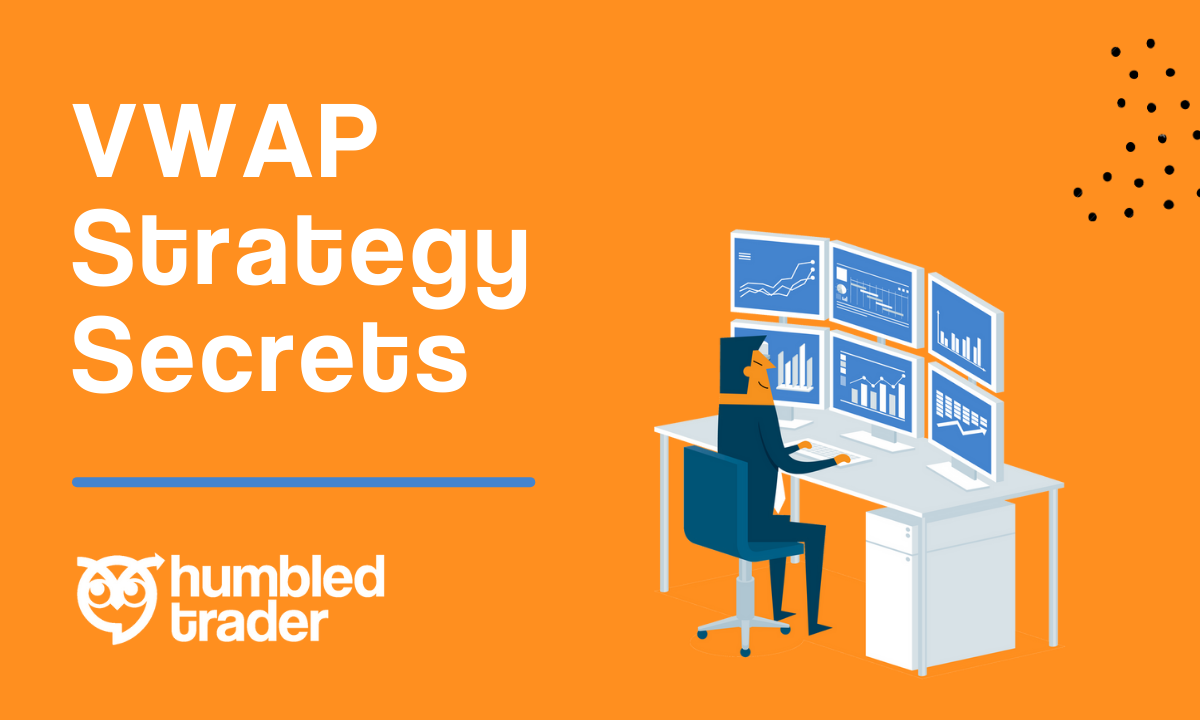Why 2023 Is The Year You Should Start Trading

If not this year, then there will never be a perfect time for you to start trading.
2022 was an awful year for the stock market, with the S&P 500 down 19.5% and the Nasdaq even down 33%. Many expect this year to be terrible as well. Gloomy headlines in the market, contracting earnings, and recession fear loom over us. It feels impossible to get excited about putting money on the market.
However, this simply isn’t true—at least not for traders. I promise you; there are plenty of good reasons to be enthusiastic about the volatility in the markets this year. When the market is in a downturn, all you need is a shift in strategy and the right resources. Don’t be fooled, there are some great opportunities in this market. You just have to know where to look as a trader.
In fact, in this blog post, I’ll show you six reasons why it’s a great time to profit from trading in 2023 and step-by-step strategies on how to do it.
It’s never been easier to start day trading
So the first reason why you should start trading in 2023 is that it’s never been easier to start learning about day trading. You can access so much free education online, and the software and trading tools are more sophisticated than they’ve ever been. It only gets better.
Day trading with technological advancements
With the advancement of technology, we day traders have access to a wealth of information and tools to help us make informed decisions. This includes real-time market data, advanced trading software, and algorithmic trading.
Some tools are free, such as:
TradingView for online charting;
Webull for the premarket screener, and
Finviz for stock research.
Personal favorites here are the stock scanning software that picks up the hottest stocks that are gapping up, as well as news research platforms that allow you to read the news instantly and make a move faster than Jim Cramer.
Learn day trading with tons of educational resources
There are many educational resources available for you to learn more about day trading for free, including online courses, books, webinars, and more.
Free resources are great for new traders who want to explore whether trading is the right path for them. For example, I have a long playlist for beginner traders that teaches you how I would personally start from scratch: with content about picking a platform, risk management, and trading strategies.
I wish I had these resources when I first started eight years ago to cut short the learning time. So make sure to utilize my videos and learn as much as you can!
Easier to start day trading with higher broker accessibility
There are so many online trading platforms now. It’s so easy for you to start day trading without the need to have preexisting knowledge, experience, or high account capital.
When I first started trading eight years ago, most brokers required initial funding of $2,000 to $5,000 in order to open a margin account. For now, you can open an account for as little as $100.
Note that I’m not suggesting you open an account and start trading with only $100, but sometimes you do need to put money in the account in order to activate paper trading.
But we can’t deny that the barrier to entry for investing has been lowered, with reduced account minimums and heavily discounted, sometimes even free, commissions. For example, Interactive Brokers offers trades for only $1, while advanced brokers like Centerpoint even offer rebates. Of course, there’s $0 commission trading as well. While I’m not a proponent of using these free commission apps or platforms to day trade live, I think using them for swing trading or investing is totally fine.
Good thing to have market volatility
My second reason for why you should start trading in 2023 is also the same reason why some people advise against trading: market volatility.
Bear markets are characterized by increased volatility, and while some people say this is a bad thing…Well, only traders understand the opportunities it presents!
Investors want a calm steady trend in a slow market. However, as traders, we thrive from volatility day in and day out. Whether the stocks are flying to the moon, or crashing to the ground. Volatile markets present opportunities for day traders to make profits because day traders make money from big ranges per share, not in the long-term percentage gain.
Here’s an example to show you how traders earn:
Volatile stock example: NVDA - April 12, 2023
Investors may hate it when NVDA gapped up $3, opened green, but went back to its opening price and dropped even lower, closing at around 266. This is a lot of intraday volatility!
But for traders, we can short the open price for $2 per share, and the dip buys from the lows at prior daily support for another $3 per share from going long, which is an amazing range to profit from.
On only 100 shares, that would be $500 on the day; if on 1000 shares, that’s around $5000. (But remember, the opposite could happen!) As stock prices fluctuate more widely, there are more opportunities to make quick profits throughout the day for traders, as long as there is range and volume.
Good time to short stocks
Now that you know how to trade volatile stocks, this brings me to the third reason why 2023 is a great time for you to start trading. Now is the best time to start or practice your short-selling strategies.
Short selling means borrowing shares from a broker, selling them, and hoping to buy them back later at a lower price to return them to the broker.
In a bear market, there are usually more opportunities for short selling as many stocks experience downward price movements.
Here is a shorting strategy that would work well in a bear market:
The stock should have a consistent volume: around 12 million per day;
It has a lot of range: $2-4 range.
Daily chart aligns with the setup.
Now I will explain the shorting strategy with an example: Coinbase (COIN).
Example: COIN - April 12, 2023
The stock was approaching $72 with the CPI data announcement on April 12, 2023, which is the previous resistance level.
When the price was rejected at the $72 level, I shorted near that level, anticipating a potential downside of $70.10 and $67.66.
That’s a 1:5 risk-to-reward ratio (that means you’re risking 1 dollar being lost to potentially earning 5 dollars).
For the actual execution of the trade, you can refer to the YouTube video below.
Bonus Tip: Keep an eye on the indexes
You can find out the overall market sentiment with SPY/ QQQ, which applies to NVDA, TSLA, and most large-cap tech stocks.
As you can see on the graph, the tech stock price movements are significantly similar to the indexes.
Short selling isn't for everyone, and it requires really strict risk management. Before making any short trades, you should always remember how important it is to have your stop losses in place!
Good time to buy the dip
The fourth reason why you should start trading this year is that there are many opportunities to buy the dip.
I know some of you must be thinking, "Oh my, Humbled Trader, you just said 2023 is a good time to short... now you're talking about buying the dip?! Make up your mind."
Believe it or not, there are good opportunities to profit from both long and short positions in all market conditions. The timing is what changes. In a bear market, your timing for buying stocks during a reversal needs to be very precise.
Buy the dip means you buy stocks or other securities when their prices have dropped, with the expectation that they will eventually rise again later on and make a profit.
Bear markets can offer some of the best buy-the-dip opportunities that you will see in your trading career. That’s because the phenomenon that caused the bear market is typically short-lived, and the market often quickly recovers.
So despite what you might think, in bear markets, rallies still happen, and you want to ride them. The key is to watch your timing when longing reversals, and following trend lines.
Buying the dip example: NVDA - April 12, 2023
Here are a few trading principles when you buy the dip:
Big range stock
Gapping down
Waiting for the golden reversal time
My strategy in the NVDA Buy The Dip trade:
Watch for a downtrend break intraday
Pair the intraday break out with daily support & resistance areas
Results: At around $266 at 10:30 a.m., there was an amazing $3-4 per share bounce.
Traders, please remember that while most investors can only profit from a bull market, as traders who trade range and volatility, we can short or long in any market condition.
If not now, then when are you going to start?
Okay, we’ve made it to my last reason why you should start trading in 2023.
If you’ve made it this far, this could either mean one of two things:
You already know this is the year to learn day trading, and you’re just sticking around for my bad jokes.
You’re still not convinced, and you need another reason to take action.
If you're still not convinced that you should start trading this year, you might be thinking, "Well, it's a bear market, we're in a recession, everything is so uncertain, I could lose everything."
I understand your concerns. I felt the same fear eight years ago. But let me ask you this one question: if not now, then when? If you don't start now, when will you?
There’s that age-old saying: "Today, you will wish you started yesterday.
If everything we just talked about isn't enough to convince you that this is the year to start trading, I want to ask you: If not now, then when?
The years 2020 and 2021 were a huge wake-up call for many people who lost their jobs or were unable to work remotely in their careers. Many realized the importance of having a side hustle or developing another source of income.
I felt extremely lucky to have my trading skills, which I have been developing and experiencing for the past eight years. If I were still working my 9-to-7 job in film, things would have gotten really bad.
Perhaps the extra skills or side hustle you need aren't related to trading, and that's okay. Just learn from those two terrible years and know that you should develop a backup plan. Having your 9-5 or 9-7 job as your only source of income isn't reliable.
Let me be honest. There will never really be the perfect time to start trading. The risk of losing money is never going to go away. That’s part of the job, but you can determine how much you lose when you trade.
That's the reason why you should:
start small with your trade
To start small. You should not be risking your entire $5000 account as a beginner anyway. Risk only $5 or $10 per trade, and take that as market tuition.
start with paper trading
familiarize yourself with your strategies and technical analysis without the risk of losing your money
And remember, you have plenty of free resources or playlists like the ones provided on this channel. And the barrier to entry is so low nowadays that you can simply click a few links in the blog or video below and open a free simulated account with live market data.
Don’t feel like reading? Watch the video.



